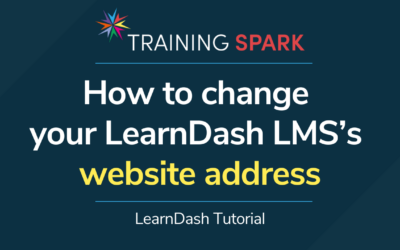We’ve worked with many training providers to help them take their expertise online. Many of our clients deliver their training to other organisations – typically bigger businesses that need help overcoming a specific workplace challenge.
Yet many of the popular online learning platforms, such as Teachable, Thinkific and Kajabi, are oriented around selling online courses and training to individuals rather than into other organisations.
This shouldn’t make much of a difference, right? Actually, if you’re a training company or provider looking to deliver online training, standalone or blended into other businesses, then there are some key differences.
1. Commercial arrangement and payment
In our experience, commercial agreements – and how a financial transaction occurs – between training providers and their clients can vary wildly. For example, some training providers price per learner, whereas some prefer to offer a bulk price based on estimated numbers. In addition, some may price their offering based on a single course, whereas others price based on a suite of courses (which may involve some live or face-to-face training).
Whatever the approach, it’s clear that one size rarely fits all, and this is rarely ‘systemised’ i.e. the flexibility to price according to the client is critical. Often, the training provider and their client will agree on a fee paid by bank transfer upon receipt of an invoice.
This means that eCommerce functionality – often included with online learning platforms – is rarely needed to make an order, process payment and enrol users. This brings us neatly on to…
2. Enrolling and administering users
When it comes to online learning, an essential administrative task for a training provider is enrolling and managing a client’s learners onto the learning platform.
When selling directly to individuals (B2C), the process to enrol learners will be the same each time. Each learner will typically enrol on the same course as other learners through a shopping cart. But this isn’t the case when selling training into another business or organisation.
A training provider may have agreed on a specific package of courses, which could be different from other groups within the same organisation. Indeed you may have a gradual rollout of your training across the organisation, so need to split their employees into separate groups/cohorts.
You’ll need a way of adding learners to the right groups and ensuring they can access the courses relevant to them. You may also need to manage how long they have access to these courses and if you need to ‘drip’ access over time.
Some clients may want you to do the grunt work and enrol them on your platform. However, if a client has many learners, then this could be very time-consuming when done manually.
You’ll need to ensure your LMS solution provides you with the flexibility and capability to handle these aspects effectively and efficiently.
3. Bespoke requirements
We’ve found that a training provider’s clients often have specific requests they want as part of the contract.
They may want to insert their own content into the training. For example, this could be signposting to existing resources on the company intranet or the contact details of the main internal stakeholder for this topic. You’ll want your LMS to cater for these requests – without having to replicate entire courses.
Clients may want their own branding on the online training too. For example, if the training is being delivered as part of a broader initiative within the organisation, they may want their company logo to permeate across the learning platform. So again, if you’re going to meet your client’s needs, then your LMS should provide this.
4. Monitoring progress
Unsurprisingly, the key HR or L&D contact at the organisation will want to know how their employees are progressing with their training. They’ve invested in the training so they will want to check they are getting value for money and who has completed their courses.
Of course, having reports can also be helpful from a commercial perspective. For example, training providers will want to renew their arrangements with their clients – so having simple and clear data to demonstrate progress (and satisfaction) will strengthen these discussions.
We’ve found that it’s rare that the client will want the detail. Often they’ll just want a concise top-level view on how individuals, and groups of learners, are progressing. Therefore, your LMS should provide you with a way for the client to view this data in real-time and download it in a suitable format for any internal purposes they may have.
—
The recurring theme in the four points we have outlined is flexibility. Of course, as a training provider, you’ll have a preferred way of working, but you’ll want to be able to flex to the client’s requirements – particularly if it could be the difference between a sale or not.
That’s why you need an online learning platform that provides this flexibility. Online platforms like Teachable, Thinkific and Kajabi are too fixed – you have no control over the development plans of the platform or the ability to customise it in the way you need to for your business.
That’s why we love working with open-source platforms like WordPress. Combined with an LMS plugin like LearnDash, it provides much of the functionality you need to deliver online courses.
The great news about LearnDash is you can extend it further to add additional functionality to meet the specific needs of selling and delivering training business-to-business. Indeed It’s why we developed the Business-to-Business Toolkit. It includes a rich set of features to help training providers provide online training to other organisations and corporate clients.
So if you’re wondering how your LearnDash learning platform can cater for your B2B clients, consider the Business-to-Business Toolkit!




0 Comments